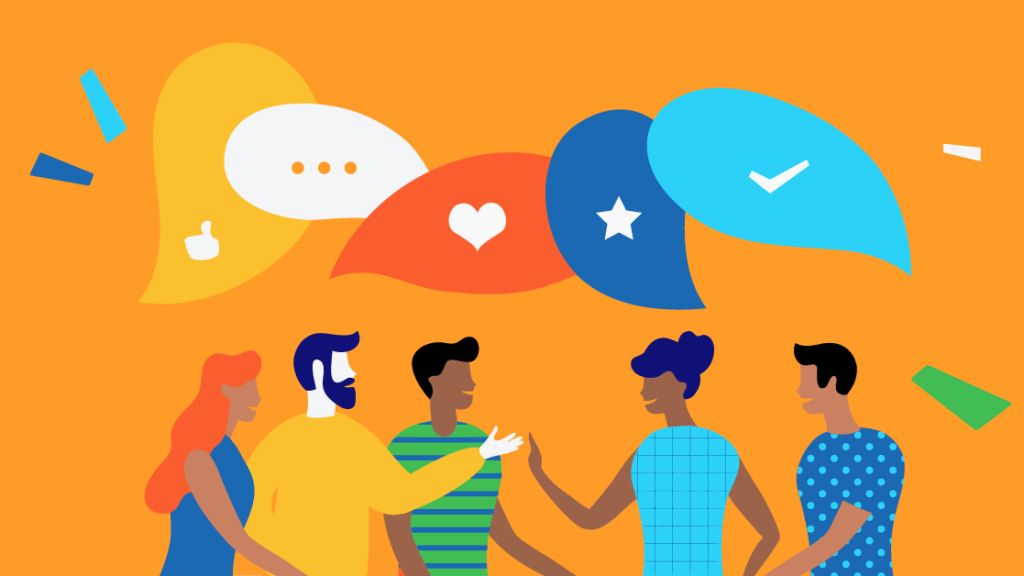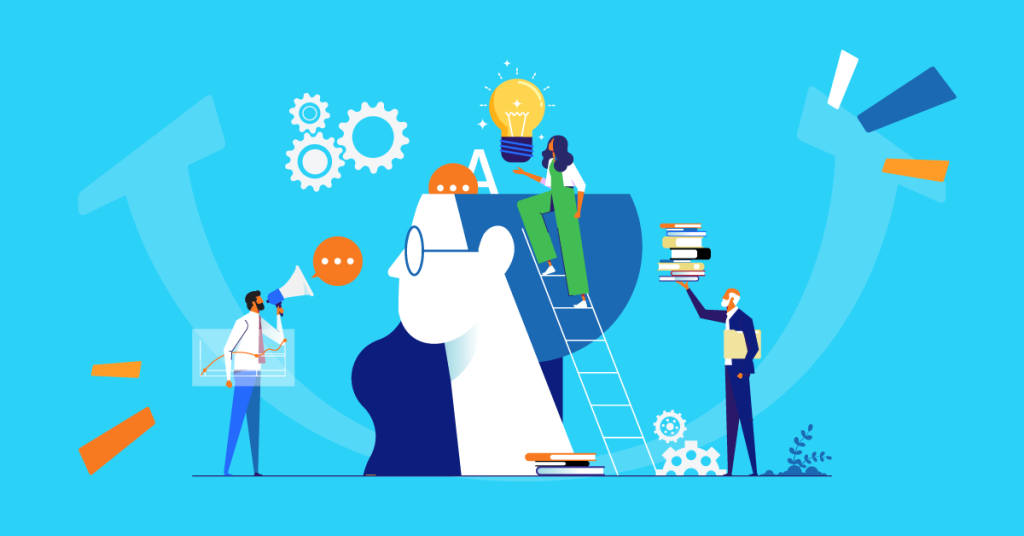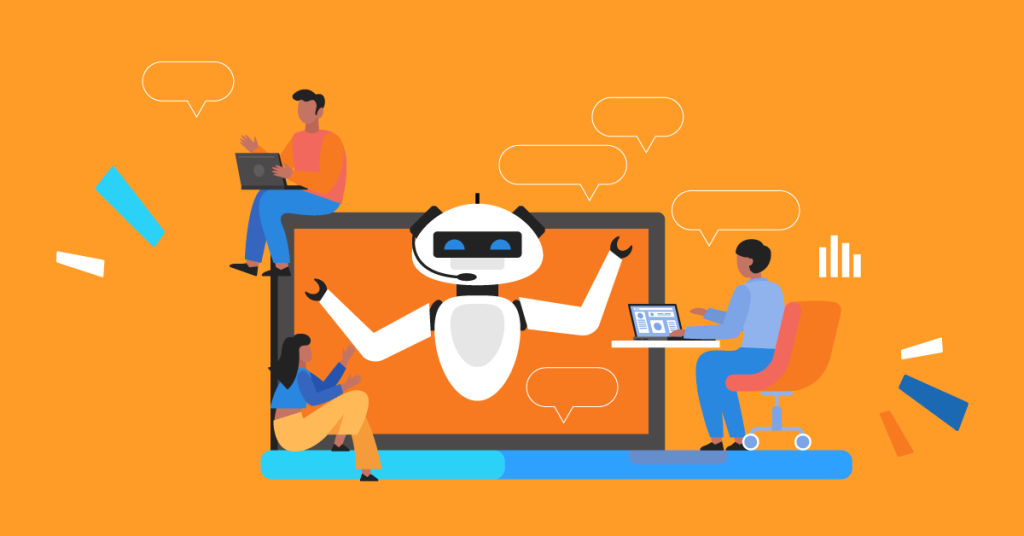Episode 10: The Power Skills to Future-proof Your Teams
Duration: 34min
About our guest:

Michelle Weise
Dr. Michelle R. Weise is the author of Long-Life Learning: Preparing for Jobs that Don’t Even Exist Yet. Thinkers50 named her one of 30 management and leadership thinkers in the world to watch in 2021.
Dr. Weise leads Rise & Design, an advisory service tailored for organizations seeking to design education and workforce strategies that will prepare working-age adults for the jobs of today and tomorrow. She has also served as Harvard University’s Task Force on Skills and Employability, and the American Academy of Arts and Sciences’ Commission on the Future of Undergraduate Education.
Share episode
What are the 3 power skills every professional needs for the future? How do the human skills employees build in their personal lives benefit the workplace? Educational expert and author Dr. Michelle Weise explains how rapid technological innovation is demanding a change in the way we approach learning and work.
Together, we’ll cover how we can prepare for jobs that don’t even exist yet, why the workplace is destined to also become a classroom, and the skills we need to train today to stay innovative in our jobs.
Key takeaways:
To excel in the future workspace, professionals must cultivate three essential power skills. Self-awareness, empathy, and communication. Self-awareness involves understanding one’s impact on others. Empathy and communication are fundamental across all domains. They emphasize the need to connect with and effectively convey messages to others. Broad-based human skills like communication, synthesis, and critical thinking are vital for any job, too. They play a crucial role in professional progress and advancement.
Human skills and power skills are not sufficient on their own. A “T-shaped” learner is an essential concept. This learner combines these human and power skills with specific vertical, technical, or technological expertise. This approach ensures professionals are well-rounded, combining human-oriented skills and specialized knowledge in their field.
Leaders should identify the hidden skills within their workforce to prepare for future needs. It’s about looking internally at the “talent gold” and getting to know the granular skills of the people and what they’re bringing to the table. Many of these skills are usually essential human skills coming from informal experiences (caregiving, customer service, etc.) that people may need help articulating.
Skills development should shift from being an individual’s off-hours responsibility to being integrated into the workday. Organizations should allocate paid time for employees to learn new skills, moving beyond just compliance training. Starting with small, dedicated learning periods can help build internal talent.
The innovative use of simulations enhances skill development and hiring decisions. Unlike the high-stakes, real-life situations, they provide a risk-free environment for practice. With the help of an HR coach, such simulations can offer personalized feedback so that individuals can adjust their behavior and improve their skills.
More episodes we think you’ll love
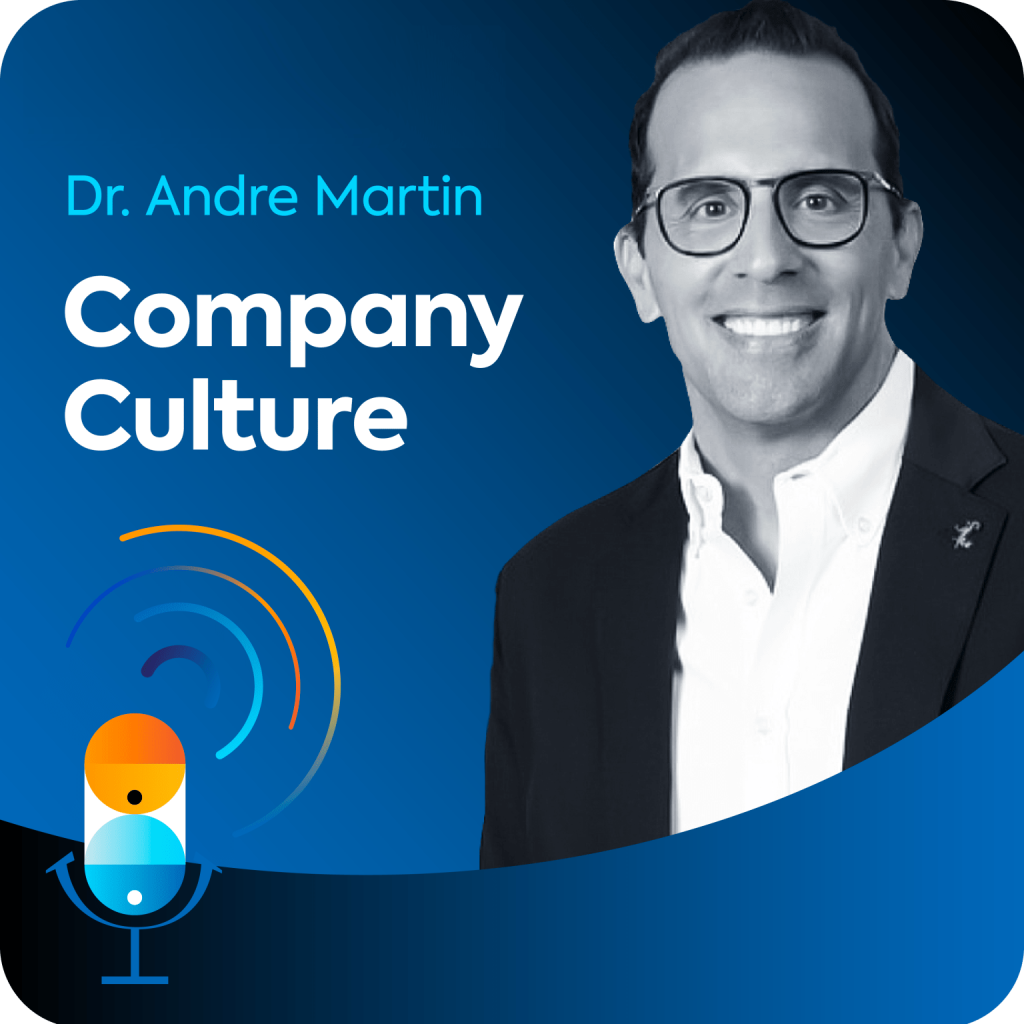
January 31, 2024 • 38 min.
•
People Management | Learning & Development
Defining & Decoding Company Culture
What is company culture? Is it ping-pong tables and perks? Is it the values we talk about internally? Or is it the way the company works “on a random Tuesday in October”? With experience at Disney, Nike, and Google, Talent Exec, Andre Martin joins the discussion. Join us and find out why authenticity and intention lie at the heart of a consistent culture.

December 6, 2023 • 40 min.
•
Organizational Design | People Management | Learning & Development
Preparing for the AI-powered workplace
What’s on the horizon beyond ChatGPT? How can you prepare for AI-led digital transformation? We sit down with Ronald Ashri to discuss everything from employee privacy to rethinking how teams are trained and emerging new AI-related roles (prompt engineers?!). Join us as we skip the speculation and get stuck into the concrete considerations organizations should take into account when adopting new AI tools.
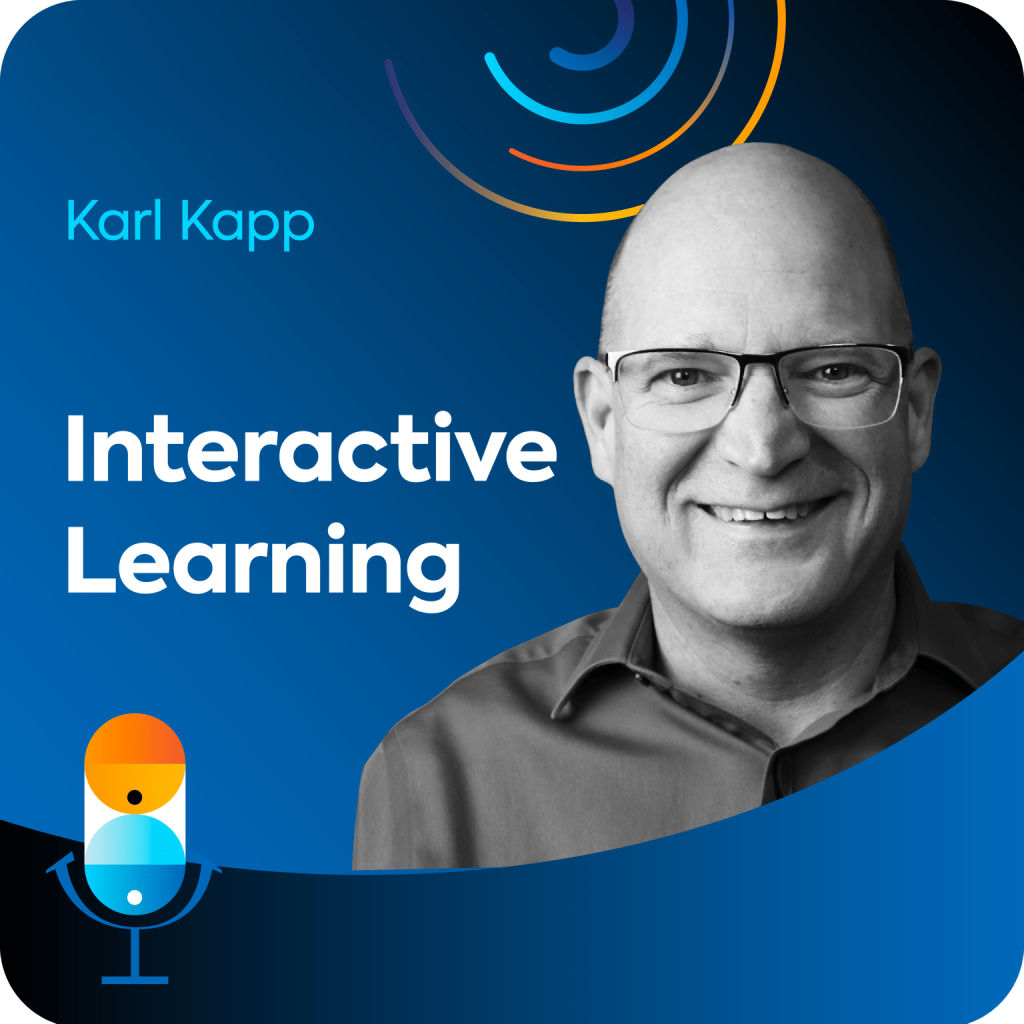
October 25, 2023 • 30 min.
•
Learning & Development
Power Up Training with Interactive Content Design
How can we make sure employees are active and engaged during training? It’s time to elevate our learning game. We talk with Karl Kapp, Gamification and Instructional Design expert, professor at Bloomsburg University, and TEDx speaker. Karl reveals the secrets behind crafting effective, meaningful, and interactive content design for businesses big and small.
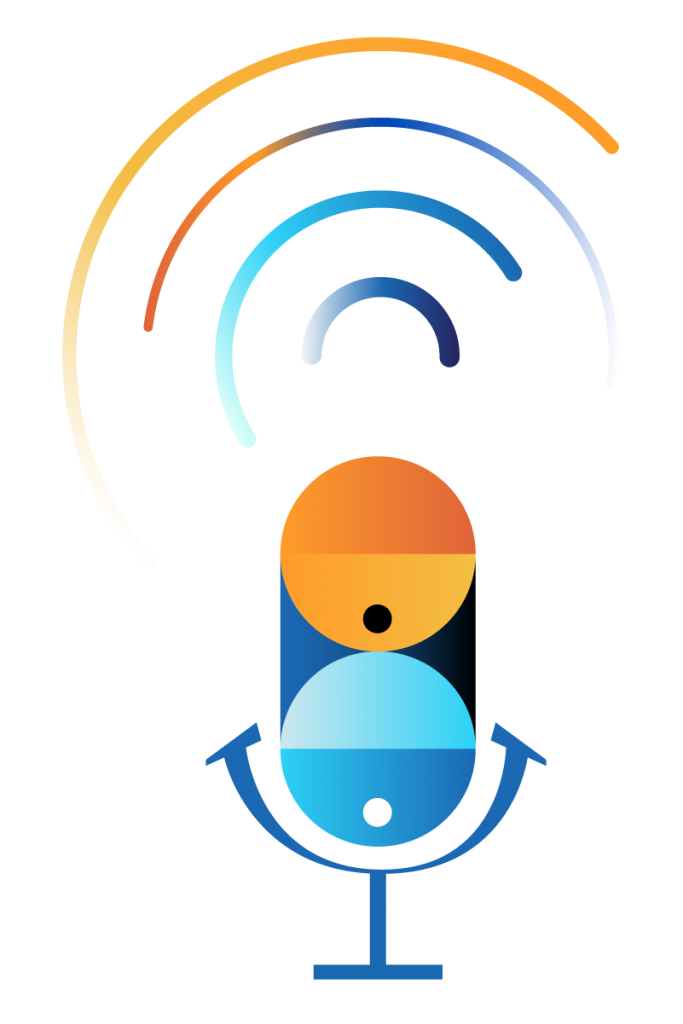
Never miss an episode! Get every new drop right in your inbox
Full Episode Transcript
Host: Michelle, thank you so much for taking the time to talk to us today. [00:02:00]
Michelle: Happy to be here. [00:02:05]
Host: I’d love to just dive right in into power skills. So firstly, for you, what are power skills, and when did supposedly soft skills evolve into being termed power skills? [00:02:06]
Michelle: I think a lot of people have various terms for different kinds of sort of non cognitive skills. Typically, I actually call them human skills. To distinguish these skills from the real kind of excellent skills that machines or computers or machine learning or AI can do. And as we think about the future of work in particular, we really have to think about the skills that are going to give us some sort of unique competitive advantage for the future.
And now that we’re seeing the sheer obvious and unrelenting power of something like generative AI, we really have to think about honing those skills. But I think a lot of people have various names for these skills. They call them power skills. They call them interpersonal skills, workforce-readiness skills, 21st-century skills, whatever you call them. [00:02:19]
I think we’re all talking about the same kind of general competencies around broad-based human skills that are around communication, synthesis, critical thinking, systems thinking, empathy, emotional intelligence, judgment, right? All of these really important kinds of skills. The way that I tend to think about the role of these human skills is that just sort of being a generalist and being great at these human skills is core to any job.
It’s core to any progress and advancement and getting promotions within any sort of setting. Human skills alone won’t be enough for the future of work. We have to think about almost the concept of like T T-shaped learner, where you have that broad-based kind of human orientation, but you also have some vertical or technical or technological expertise.
And we’re going to need to have both. We’re going to need to have sort of this intellectual dexterity along with some technical expertise. We’re going to need to know enough to intervene when the robots or the machines or the AI is doing something that we have to interrogate. So, we have to have enough domain knowledge to intervene at the right times. [00:03:06]
Host: That’s a great answer, and I love that you’re calling them human skills. I think it helps people just narrow it down, make it more approachable. What would you say, and what do you think are the essential human skills that are needed in the workplace of tomorrow that are perhaps less valued today in the workplace? [00:04:16]
Michelle: Yeah, it’s a really great question. One thing I would say just about these human skills and another thing to just keep in mind is even though they are uniquely human skills, right? Like that we know that machines are not excelling at these skills. We also have to remember that we ourselves as humans are not great at these skills.
They’re where they don’t come naturally. They’re not built in us. At a very sophisticated level, we actually have to practice and hone these skills over time. I think we’ve all worked with people who lack excellent human skills, right? We’ve seen them lack self-awareness, or they’re not reading social cues, or they’re not understanding nonverbal gestures, right?
We know when we see the lack of these skills. So it’s really important to remember that they aren’t necessarily innate within us at high level. So I think that is pretty key to remember. I think as we think about the core skills that are distinctive for the future, it’s probably going to sort of change in a list of priorities depending on what industry domain we’re talking about, right?
Because if you’re going into behavioral health, as an example, your EQ levels and your empathy, and your communication levels have to be at like an all-time high. Versus if you were to maybe go into financial services, maybe some of that EQ isn’t quite the priority as much as it may be synthesis or, you know, these different kinds of forecasting skills that you might need to bring into play. [00:04:37]
So it’s important to kind of just sort of think about, especially as we look at the role of ChatGPT today and generative AI, we have to kind of look at what is this machine learning amazing at and what can it not do? And then I think it’s helpful for us to begin to think about what is it that we can then extrapolate from that area to say, here’s what I may need to bring to the industry that I’m in.
I work in consulting as an example. ChatGPT is excellent at summarizing and synthesizing. What it’s maybe not good at is taking knowledge from one seemingly unrelated domain and applying it to another. And so that’s where I come in as a human, right? Like I can take abstract concepts from different disciplines and apply them within a new domain and that’s something that I bring to the table. So you really have to kind of look at it based on the industry that you’re in. [00:06:09]
Host: That’s really good advice. And to an extent, ChatGPT, it’s great. As you said, it’s a great tool, but it also misses those contextual details that only we can pick up, whether it is because we know a specific case or just because we know who we’re going to be talking to. You’ve talked a lot about AI bringing up ChatGPT as well, where might we see the most disruption from AI happening? [00:07:05]
Michelle: It’s fascinating because the Gallup actually used to do this poll about American workers and how worried they were about being automated out of their work. They’ve been doing this every year since 2017. And what’s interesting is that number has remained flat over the years, and the people who were always the most worried about being automated out of work were the people without college degrees. And it made sense, right? We were seeing automation emerge, you know, in different kinds, in the car industry as an example, right?
Robots can now build car in ways that humans used to only be able to do. But what’s really interesting is with the emergence of ChatGPT, they ran that same Gallup poll, and it’s spiked up seven percentage points in terms of, I think it’s like now 22 percent of people are worried about completely losing their jobs to automation.
And it was all people with college degrees who are now worried about it because they’ve seen the power of what these large language models can do. So, it’s really fascinating to see that the sort of white-collar jobs, the knowledge economy that we all felt pretty secure in is now a little bit under threat. And this is where a lot of my research comes into play, where I’ve looked at a longer work life and a longer time horizon and sort of a more turbulent work.
I call it long-life learning. And basically the concept is really that the future of work and the future of education are one and the same. We’re all going to have to continuously reskill and retool ourselves over this longer and more turbulent work life. [00:07:34]
Host: It’s interesting because, at the end of the day, it really all starts from education. It’s not just a question of what do we do once we get into an organization, once we’re starting off our careers. I think it has a lot to do with how we start from way before, from early childhood education all the way to higher education, and how we approach that. I do want to talk about certain industries where human skills are overlooked a little bit.
But should, in fact, be used more. And in that sense, I’d also love for you to sort of unpack the partnership between education and business. How can businesses from those partnerships with educational institutions, for instance, how can they help in supporting these human skills? [00:09:12]
Michelle: Yeah, I love the question. One of the hardest things for educational institutions to do is to figure out how exactly to partner with industry and with business. It’s hard when you think about the ways in which any sort of small, medium, or large enterprise is structured. It’s hard to know who to go to, who’s the decision maker, who’s the buyer, who’s the one looking at tech-enabled solutions, whatever the thing may be.
But it’s really hard to understand who needs to be at the table because it differs depending on which business you’re talking to. So, if there was a way for employers of all levels and sizes to make it clear who that person is within the company for an institution or a learning provider to reach out to.
That would be the first step in just making it a little bit more easily navigable for that bridge to occur. I know there’s a lot of time and energy spent where even someone from the C suite is saying, yes, we need to think about training and development differently. But that maybe doesn’t trickle down to the hiring managers or the HR personnel who are leading the charge. [00:10:04]
And so what we’ve seen in some of the most incredible sort of versions of this are ways in which companies and institutions are backwards mapping from their need. So they may say we see this in our vision for the future, our strategic plan. We need this many kinds of these jobs. And so far, when we look at our personnel, they may not have those skills.
So a first good step for institutions and employers to do is to look internally at the talent gold within the company, right? And when we really dig down and think about how much we know about our people, we know very little. We know very little about the granular skills that people bring to the table because there’s so much learning that arrives through caregiving experiences, through raising a family, through all of our informal work experience, through years of experience. It’s just not codified in some sort of credential. So it’s really important for companies to go in and sort of dissect and surface those skills that people are bringing to the table. And many of them are those human skills. Many of them are these skills that people just need help articulating, even from working at a retail store or being a customer service associate.
There are really incredible human skills that evolve from these experiences. We just need to be able to articulate them because once we actually share and say what those skills are, it’s a lot easier for different kinds of AI platforms as an example to take those skills and say, did you know that you may be 85 percent of the way there towards being a system network analyst or 30 percent of the way there towards being a human resources manager. Then you can be able to see what are my gaps that I need to fill? What are those competencies that I need to acquire? And so it becomes more of a road map to the future. [00:11:13]
Host: That’s amazing advice. And I really want us to hone in on that just a little bit. I know you’ve mentioned in the past that empathy isn’t something you learn in six weeks. [00:13:10]
Michelle: Or an hour. [00:13:20]
Host: Or an hour. Definitely not. And it really does get to the core of the problem of training for human skills. So these skills evolve over a lifetime. And I do want to ask you, what is a piece of advice you would give to leaders who are looking to start training their teams and power skills other than looking internally and trying to identify them themselves? How can they create a supportive environment for skill development, especially when people need to be given time and resources? [00:13:23]
Michelle: We often think about funding and financing education as like a real challenge, especially financing ongoing skill development. But when you really talk about our most precious resources, yes, funding and financing is a core piece of that. But time is really that key component, and what we have been doing over the last four decades, in particular, is we’ve been forcing people to take extra time out of their schedule beyond work outside of work and beyond their family responsibilities to say “you skill up on your own.”
We’ve made it an individual burden. And that really needs to shift. We need to think about our workplace of the future as a classroom of the future. In order to build towards those new skills for the future of work, we need to carve out time in the flow of work. It could be small. A company could start off with 30 minutes a day, an hour a day, an hour a week, but there needs to be the deliberate carving out of time for employees to be paid to actually learn new skills.
The only kind of on-the-job training that we provide today revolves around risk mitigation and compliance training, right? And it’s, it’s not about actually building new skills for the future. If we want to build our people or build our talent pipeline, and we can’t always just kind of go out and buy exactly the talent, we need to actually make it possible for people to do this in the flow of work. [00:13:56]
Host: My question here is something that I imagine this is a big issue. I know it’s actually a big issue, especially in fast paced competitive environments is how do you make time? How do you convince an employer and HR to do this? [00:15:26]
Michelle: I think one of the stepping stones to kind of sort of rationalizing a way out of carving out a time is really that employers need to actually take a look and measure their churn. We talk about the different kinds of investments we make in our human capital, but we don’t actually, most companies don’t actually take a hard look at how intense the churn and turnover is of their employees. The sort of, the prevailing myth has been if I, as an employer, invest in my employees and build new skills for them, they’re going to leave me and they’re going to go work for my competition.
That has been this longstanding myth. There is actually no data to support this myth, but it has just had this kind of real sort of staying power. And so what is a helpful beginning point is to sort of reflect on what those numbers are and then begin to measure what is the return on investment that I make in terms of longer durations of people staying with me as a company because most employees will see it as an investment in themselves.
They will actually view it completely differently and build loyalty with the brand that they are with because they’re seeing the company actually believe in them and invest in them. You were asking with this kind of investment of time. How do you actually practice these human skills? Right? It’s really hard to actually, it’s almost easier to do a boot camp, like a coding boot camp, and take someone and skill them up in a technical skill in 12 weeks. [00:15:44]
Those kinds of programs exist, and they have great outcomes. There’s been a lot of these different kinds of versions of these tech skills upskilling programs. There aren’t a lot of versions of the human skills piece, right? I think we assume that folks who maybe went to a liberal arts college have these kinds of competencies.
But as like a 45 or 55-year-old person transitioning into a new job in the workforce, that person is not going to go back and say, I’m going to go get a liberal arts education now in order to build my human skills. What does that practice look like? There’s a really interesting group called GLEAC, and what they do is they work with Prada as an example.
And their customer service associates within Prada have on their app different little modules. Sometimes they’re 30 seconds, sometimes they’re a couple of minutes, but they’re learning about empathy, say, or EQ. And what they can do is they can reflect on their day-to-day experiences. And talk about the ways that they’re building those skills.
So one of them as an example, saw a woman come into the store who did not look like a typical Prada customer, right? Prada is these really expensive handbags many thousands of dollars, person came in did not look like a traditional sort of buyer, but what she did is she withheld her judgment and served that person ended up buying a lot of stuff, right?
It was a really powerful kind of exchange. And so what she was able to do in her reflection is talk about the ways in which she was quick to judge initially, right? And she was reflecting on what her mind was doing and how she had to withhold judgment and engage differently. And this is what the outcome was, right?
These are the kinds of reflections we have to do in a day-to-day basis. We just don’t have the opportunity to think about these little interactions we have. But those interactions, right, accumulate over time. If we have bad, slightly bad interaction over interaction, that can really tinge a work experience. And so that’s another example of just like small doses of practice that can really go a long way. [00:17:22]
Host: I also want us to talk about skills such as adaptability or critical thinking, which are typically a little challenging to assess. Does it require much more tailored assessments to each individual employee, do you think? [00:19:33]
Michelle: Yeah, if we think about generally the kind of employee we want to be. We all want to be someone who can think on her toes, right? We want to be someone who can think nimbly in the most ambiguous of circumstances. And what that requires is this kind of adaptability and that critical thinking. And so, it doesn’t always have to be a specific kind of assessment, but there is a great example of a version of this called the CLA.
And what it does is, for instance, a person is given, or a student is given, information from his or her boss saying, we were about to buy 10 of these planes for our company to help with sales, but all of a sudden one of the planes just crashed and killed, you know, a couple of people. And so what the student is given is a lot of different kinds of information about the crash of that plane, right?
And data, different kinds of forms of data that’s visualized differently, and pie charts and graphs, right? They’re given memos and different sorts of information to sift through, almost like an investigative journalist to figure out what, what exactly happened because the boss wants to know, should I still invest in this company and buy those 10 planes?
Right? And so you as a person have to look at that information, adapt to the different kinds of information you’re delivered, and then execute in a very synthesized and clear memo. And when you think about that simple test, that simple simulation, it’s incredibly powerful. Right? Like I would love to know how a future employee that I’m about to hire would respond to a test like that.
Even if it has nothing to do with the domain that we work in. I could be in clothing and I want to know how someone would respond to this kind of question, right? It’s that sort of like nimble thinking in an ambiguous, uncertain circumstance that we really kind of want to test for there. [00:19:50]
Host: Does any data come to mind that might be important when trying to build on assessments and skill gaps? Yes, testing is not always the way to go, but we still need to measure it somehow, right? Just to monitor it, if nothing else, to see how it’s improving. So is there any kind of data that is particularly important, not only when hiring individuals, but also when thinking about developing the workforce in general [00:21:57]
Michelle: Yeah, the hard part about sort of our labor regulations in the U.S., in particular, is that you’re not allowed to hire based solely on a kind of a competency-based assessment, but you can incorporate a competency-based assessment into your hiring processes. It just has to be one element of many, and it would be, you wouldn’t want to hire someone just only based on one sort of element.
So there are versions of this where you can think about the right kind of competency-based way of assessing for this. And that’s really how most of us do make decisions, right? We want to have someone, you know, work with a problem that is typical of the kinds of problems we encounter on a daily basis.
And the people who make the strongest hiring decisions tend to rely on these kinds of indicators. And then one other way to do this outside of a traditional kind of more competency-based assessment or assignment is with our advancements in AR, VR, and technology in general. There are really different kinds of emergent solutions coming out that help us practice and test out these skills too. One company is called MURSION, and basically it has on your computer screen. It’s generated by AI, but also human puppeteer leveraging the AI. So you’re thrust into a situation where you have to give one of your direct reports. [00:22:28]
It’s really difficult feedback. And when you think about that typical situation in a work environment, when we have to do that as real employees, we don’t have opportunities to practice before we go in. And it’s always this really painful high-stakes environment that you’re just thrown into. And I remember some of my earliest versions of this in the real world.
They just blew up in my face, and they went awry, and I had to react on the fly. I didn’t have ways to practice in advance. But what this simulation can do is actually have you encounter a person who does not know how to take feedback, right? Who flips out, and you have to react, or you have to react to their different kinds of cues, and you have to adjust your behavior.
And what’s really fascinating is that you have in some of these examples or some of these versions of these kinds of simulations is you could have an HR coach watching this with you and analyzing and helping you understand here’s how you might have done this differently. So I think that’s just a really interesting example of where we might see this go in the future. We may see these different kinds of scenario-based solutions where we get to practice these skills as well. [00:24:00]
Host: If only we lived in a world where every organization offered that opportunity. Organization and educational institution, because you’re right, we are just thrown into these really high stakes environments and situations, and we haven’t had a chance to practice it. You know, a lot of times a manager is going to tell you, hey, you need to talk to your employee, to your team member about this and this. It might give you a quick few lines, but that’s really not enough to be able to empathize, to understand, and really help them manage that feedback or how they might react to it. And you’ve also talked about micro-credentials.
What would you say are the roles of micro-credentials and intensive courses when it comes to assessing and training this kind of skills? Does it risk a lack of standardization with different companies providing different tests and certificates? [00:25:13]
Michelle: Yeah, it’s a real Wild West right now. There’s a group called Credential Engine that has counted these different kinds of post-secondary credentials and certifications and certificates. We have over 974,000 different kinds of certificates and credentials and micro-credentials out there flooding our education and labor markets.
And if we think about ourselves and navigating a way forward, how in the world are we supposed to pick the right one, the right thing to take and to pay for that’s going to launch us to a better opportunity, right? We have no way of kind of understanding how to make that decision. So what micro-credentials are useful for is just alerting a hiring manager to a specific signal.
So, for instance, if I was a psychology major in college, but I really want to move into product design or product marketing or where the thing may be, what I can do is take different kinds of whatever those learning opportunities that I’m interested in and that I think the field requires. I can put those little signals in my resume, and that’s just sort of useful as just a better way for a hiring manager to sort of pick out and say, oh, that’s the right word, that’s actually the term that I’m looking for. [00:26:13]
Host: I just have a couple more questions for you. How has the rise of hybrid and remote work caused a shift in what kind of skills are needed in work? And from a business perspective, what human skills should companies and leaders prioritize so that their teams thrive even when they adopt an asynchronized way of working? [00:27:39]
Michelle: The first thing that comes to mind as I listen to that question is how good are our sensing skills, right? When we think about kind of, if we think about sort of our, our zoom screens or whatever web conferencing tool we’re using, right? And we think about the gallery view of all of our people in front of us.
How good are we at sensing? What is happening within the room or what’s going on in that person’s face, there does have to be just almost like an overcommunication of where we’re coming from, like how we’re entering the room. So how do we invite people to share red light, yellow light, green light of what kind of mindset they’re in as they’re entering this conversation, or is there any kind of feeling or word that comes to mind or just giving people a moment to just kind of be silent or whatever the thing may be, but we have to kind of sense in a different way, what our teams need. And I think with hybrid and remote work, what was really fascinating at the beginning of the pandemic was you had, you know, experts in organizational network analysis, looking at what was happening because people were selling off real estate, right, saying we don’t even need to come back to work.
But what these ONA analysts were saying was. The only reason we were seeing productivity occur in a fully remote virtual environment was because a lot of those people had that in-person connection or relationship building or rapport to feed off of to sustain that. But they were predicting over time that those threads or those connections or those bonds would fray over time and that we wouldn’t necessarily be able to continue that kind of productive work.
But what that involves is being able to sense as a leader. What do my people need? And maybe it’s when you’re on Zoom, you have to think about really what are the kinds of activities you can or cannot do in this environment? Or what is the right number of people to include in this conversation? It’s a lot more kind of forethought and strategic thinking there, but it also requires us to think about what is the cadence that my team needs of in-person connection time. Because it may be quarterly. It may be monthly. It may be something else, right? Or happy hour here and there, but there has to be the facilitation of that bond and rapport building. So it’s really, again, like it comes back to those human skills, like that’s not something right that we’re going to be able to ask ChatGPT for the right answer.
We need to kind of have a better, we need sense-making tools, and we also need just sense-making abilities to kind of assess where is my team today and what do they need. [00:28:02]
Host: I found it really interesting because in the beginning of the pandemic when everybody started remote working we check in. How you’re doing today, how is it at home. Now with asynchronous working and that most of us have gone back to a hybrid version of working. It’s like any Zoom meeting is a bit colder. So it’s really interesting that you’re bringing up that ability to sense what the team needs, and maybe it’s a good reminder also that if we’re having a Zoom call where certain people are online instead of physically, maybe, okay, we can plan something in-person to sort of… [00:30:47]
Michelle: Yeah… When you think about sort of when people enter a meeting room and how much chit chat occurs and how many random things you can address in that short amount of time, right? It’s hard to facilitate that kind of conversation on Zoom because you feel like you’re on display when you’re speaking, right?
It’s not that kind of, and you can’t hear when both of you are talking at the same time, right? It’s hard. It’s not natural. And so it’s hard to create the space to have that human connection. I think there are people who do different kinds of tools of whether it’s using the chat feature and having people write down their responses.
There does need to be a different way of surfacing voice. One of my favorite tools is an AI note taker for my different kinds of meetings. And it has a monologue feature where it kind of highlights for you when you’re talking too much. And it’s just like, it’s just a helpful little reminder of maybe I should just quiet a little and let someone else speak. [00:31:30]
Host: Perfect. And since we’re all about keeping it simple, in one sentence, what are the three power skills that every professional needs to possess to thrive in the workplace of the future? [00:32:37]
Michelle: Just three. I would say one would be self awareness, having a good understanding of how you’re coming off to other people, which is difficult.
It’s, I think, one of the biggest challenges. Empathy and communication. I would say those are core skills needed in any domain we’re talking about, but I would go with those three. [00:32:52]
Host: Great. Self-awareness, empathy, and communication. Michelle, thank you so much for taking the time for going into so much detail. We really appreciate it. [00:33:17]
Michelle: Oh, you’re so very welcome. Thanks for having me. [00:33:30]
Host: Want to train your people on power skills like self-awareness, empathy, and communication, but creating courses from scratch, just isn’t your thing? You can save time and access content prepared by the experts at TalentLibrary, the growing collection of ready-made courses available on TalentLMS. Thanks for tuning in. In the next episode, we’re talking to Mark Perna about the GenZ workforce and how leaders can get the most of their multi-generational teams. [00:33:40]

Train your people. Measure results. Drive growth.
TalentLMS gives you the tools to supercharge every step of your training.


